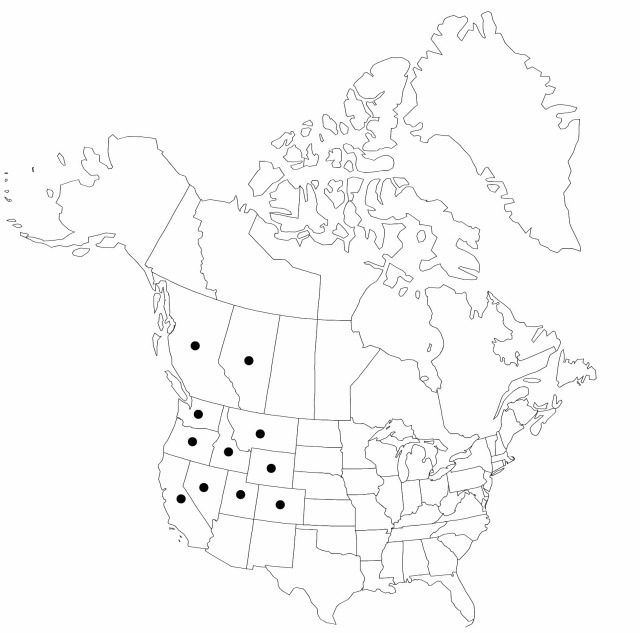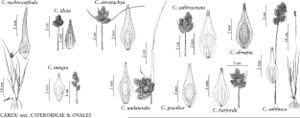Carex illota
Mem. Torrey Bot. Club 1: 15. 1889.
Plants densely cespitose. Culms 15–38 cm. Leaves: sheath summits white-hyaline, green ribbed, U-shaped, occasionally prolonged to 4 mm distal to collar; distal ligules 1–3(–3.5) mm; blades 2–4 per fertile culm, 4.5–18 cm × 1.5–2.5 mm. Inflorescences nodding, dense, dark or medium brown, 1–1.2 cm × 5.5–10 mm; proximal internode 1.3–3 mm; 2d internode 0.6–1.5 mm; proximal bracts scalelike to bristlelike. Spikes 3–6, usually individually indistinct, ovoid to broadly ovoid, 4.5–6.5 × 2.5–5.5 mm, base and apex acute to rounded; terminal spike without conspicuous staminate base. Pistillate scales dark brown, usually with pale or green midstripe, ovate, 1.5–2.5(–3.5) mm, usually shorter, narrower than perigynia, margin occasionally hyaline gold, to 0.4 mm wide, apex obtuse or acute. Perigynia ascending-spreading to spreading, gold to dark brown, conspicuously 0–7-veined abaxially, conspicuously 0–4-veined adaxially, ovate, plano-convex, 2.6–3.2 × 0.9–1.3 mm, 0.5–0.65 mm thick, margin unwinged, pithlike tissue usually present in proximal perigynia walls; beak medium or dark brown at tip, often with white-hyaline, cylindric to somewhat flat, abaxial suture with conspicuous white margin, distance from beak tip to achene 1.2–1.6 mm, entire. Achenes ovate to obovate, 1.2–1.5 × 0.8–1 mm, 0.4–0.5 mm thick. 2n = 64
Phenology: Fruiting summer.
Habitat: Marshes, bogs, wet meadows
Elevation: 2100–3700 m
Distribution

Alta., B.C., Calif., Colo., Idaho, Mont., Nev., Oreg., Utah, Wash., Wyo.
Discussion
Carex illota is unlike all other members of sect. Ovales in having perigynia lacking wings and margins consistently entire from perigynia base to beak tip.
Selected References
None.
